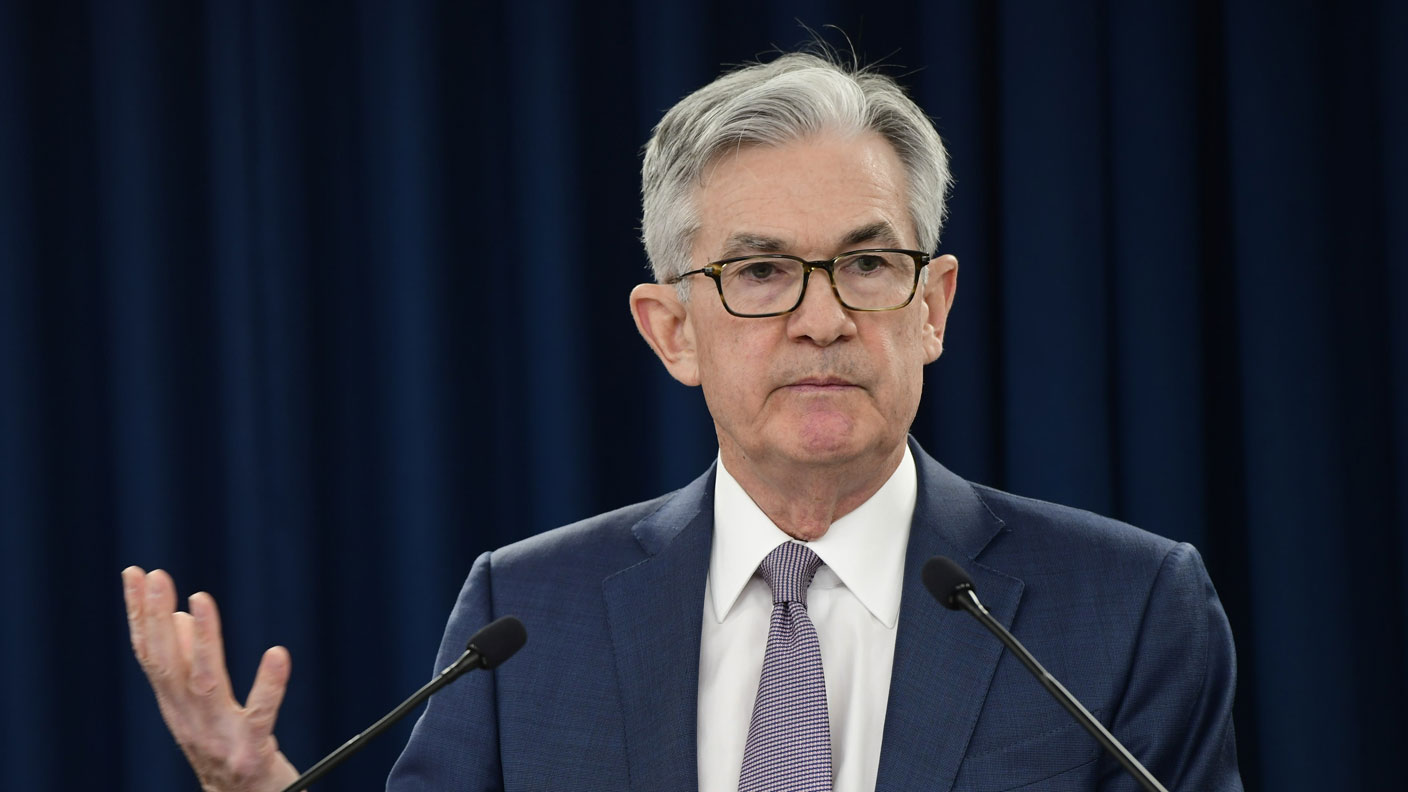The Fed has made big changes to its mission: here’s why that matters
The US Federal Reserve is changing the way it targets inflation. And that’s a lot more important than it might sound. John Stepek explains why.


Last week, Federal Reserve chairman Jerome Powell made a speech at the (virtual) annual Jackson Hole central bank shindig.
In it, he announced a couple of changes to the way the Fed does things.
That sounds like an arcane matter for academics of finance and economics.
MoneyWeek
Subscribe to MoneyWeek today and get your first six magazine issues absolutely FREE

Sign up to Money Morning
Don't miss the latest investment and personal finances news, market analysis, plus money-saving tips with our free twice-daily newsletter
Don't miss the latest investment and personal finances news, market analysis, plus money-saving tips with our free twice-daily newsletter
It’s not. It’s really important.
Here’s why.
What’s changed about the Fed’s policies?
The Federal Reserve, the US central bank, has historically targeted an inflation rate of 2%. The idea was that if inflation went above or below this level for any length of time, the Fed would get worried and have to act. (Whether you believe such action helps or hinders matters is irrelevant – it’s about the Fed feeling it has to “do something”.)
Now though, the Fed says it will target inflation “that averages 2% over time”. Why does that matter?
Because the addition of that little word “averages” provides a great deal more flexibility for the Fed. In the past decade or so, inflation has been drifting around below the 2% target more often than it has been above it.
So on average, the Fed has been missing the 2% target (depending on the timescale you choose). That means that in theory, under the new regime, the Fed could see inflation rise above 2% and sit there for quite some time, and still meet its “average” 2% target. It would have no reason to act to attempt to halt the rise.
Indeed, the fact that 2% is now the “average” target implies that the Fed should be doing its very best to push inflation higher from here. As the Fed policy itself puts it: “following periods when inflation has been running persistently below 2%, appropriate monetary policy will likely aim to achieve inflation moderately above 2% for some time.”
In other words, from here on in, you can view the Fed’s target as being closer to 3% than 2%.
Even more important was the emphasis on employment. Unlike the Bank of England, the Fed is explicitly told to look at employment as well as inflation (of course, all central banks consider employment – it’s a core aspect of the economy and thus of inflation management).
What’s changed is that the Fed is now putting employment ahead of inflation in its priorities list.
What the Fed’s shift of focus means for investors
The obvious question for investors is: why does this matter? We knew the Fed was gunning for higher inflation, even before the coronavirus recession. Powell’s predecessor, Janet Yellen, talked about “asymmetric” inflation targeting for much of her term. There’s no big revelation here.
And of course, there’s the simple fact that for all the Fed might want inflation to rise sharply, it’s not clear that triggering inflation is within the Fed’s gift. After all, it hasn’t managed it so far.
Those are fair and reasonable points. But it would be a mistake to imagine that this is irrelevant.
Firstly, there’s a big difference between having a “nudge, nudge, wink, wink” average inflation target and making it official. The former gives the market the message that the Fed will let inflation go up and won’t be too hasty to tackle it, so investors shouldn’t fear that rates will rise too.
The latter is a big advance on that. It suggests that not only will the Fed not be too hasty to raise rates, it might have to cut them further or print more money if there’s no sign of inflation rising above 2%. The shift not only gives the Fed cover for loosening monetary policy from here - it positively encourages it.
That may or may not push inflation higher, although my own view is that a sufficiently determined central bank in combination with an equally determined government can push inflation up if it wants to.
But even if you’re an inflation sceptic, recent history suggests that if nothing else, looser monetary policy will push asset prices higher and contribute (somewhat ironically) to the vulnerability of the financial system.
Secondly, the shift in focus to employment makes all of this much more explicit. The reality is that as long as unemployment is high, the Fed doesn’t really care about inflation.
We’ve got the latest non-farm payrolls release on Friday, which will give an idea of the state of the US labour market. But whether it’s better or worse than expected, one thing will be clear – unemployment will remain unacceptably high for some time to come.
This suggests that interest rate rises are so far off into the future that most investors can assume near-0% rates forever.
That’s one reason why the Nasdaq – the most obvious manifestation of the “long duration” or “jam tomorrow” bubble – keeps roaring higher.
What can throw a spanner in the works? The only thing I can think of is inflation. Proper inflation. The sort that the Fed can’t ignore. But that’s a while off, and it’ll likely require governments to go for broke. That looks as though it’s coming, but we probably have to get the US election out of the way first. Although a stronger-than-expected economic recovery could also help.
What does it mean for your money? In the shorter term, this has been negative for the US dollar. It’s also a supportive backdrop for precious metals, although given their stellar recent run, the reaction has been reasonably muted so far.
In the longer term – well, it’s just another step on the road we’ve been outlining for a while. So you can stick to your plan. And if you don’t have one, now’s a good time to get one.
It’s also a good time to subscribe to MoneyWeek magazine – get your first six issues free here.
Get the latest financial news, insights and expert analysis from our award-winning MoneyWeek team, to help you understand what really matters when it comes to your finances.
John Stepek is a senior reporter at Bloomberg News and a former editor of MoneyWeek magazine. He graduated from Strathclyde University with a degree in psychology in 1996 and has always been fascinated by the gap between the way the market works in theory and the way it works in practice, and by how our deep-rooted instincts work against our best interests as investors.
He started out in journalism by writing articles about the specific business challenges facing family firms. In 2003, he took a job on the finance desk of Teletext, where he spent two years covering the markets and breaking financial news.
His work has been published in Families in Business, Shares magazine, Spear's Magazine, The Sunday Times, and The Spectator among others. He has also appeared as an expert commentator on BBC Radio 4's Today programme, BBC Radio Scotland, Newsnight, Daily Politics and Bloomberg. His first book, on contrarian investing, The Sceptical Investor, was released in March 2019. You can follow John on Twitter at @john_stepek.
-
 Taxpayers urged to fight automated HMRC penalties as 20,000 win on appeal
Taxpayers urged to fight automated HMRC penalties as 20,000 win on appealHMRC loses more than 60% of cases when taxpayers appeal an automated penalty it has imposed, new figures show.
-
 More than five million taxpayers overpay with wrong tax codes – how to check yours is right
More than five million taxpayers overpay with wrong tax codes – how to check yours is rightHMRC overcharged taxpayers £3.5 billion in income tax the latest data shows, with tax coding errors largely to blame. Accountants say it is “essential” people check their tax codes to avoid being hit with higher bills.
-
 What's behind the big shift in Japanese government bonds?
What's behind the big shift in Japanese government bonds?Rising long-term Japanese government bond yields point to growing nervousness about the future – and not just inflation
-
 UK wages grow at a record pace
UK wages grow at a record paceThe latest UK wages data will add pressure on the BoE to push interest rates even higher.
-
 Trapped in a time of zombie government
Trapped in a time of zombie governmentIt’s not just companies that are eking out an existence, says Max King. The state is in the twilight zone too.
-
 America is in deep denial over debt
America is in deep denial over debtThe downgrade in America’s credit rating was much criticised by the US government, says Alex Rankine. But was it a long time coming?
-
 UK economy avoids stagnation with surprise growth
UK economy avoids stagnation with surprise growthGross domestic product increased by 0.2% in the second quarter and by 0.5% in June
-
 Bank of England raises interest rates to 5.25%
Bank of England raises interest rates to 5.25%The Bank has hiked rates from 5% to 5.25%, marking the 14th increase in a row. We explain what it means for savers and homeowners - and whether more rate rises are on the horizon
-
 UK inflation remains at 8.7% ‒ what it means for your money
UK inflation remains at 8.7% ‒ what it means for your moneyInflation was unmoved at 8.7% in the 12 months to May. What does this ‘sticky’ rate of inflation mean for your money?
-
 Would a food price cap actually work?
Would a food price cap actually work?Analysis The government is discussing plans to cap the prices of essentials. But could this intervention do more harm than good?
